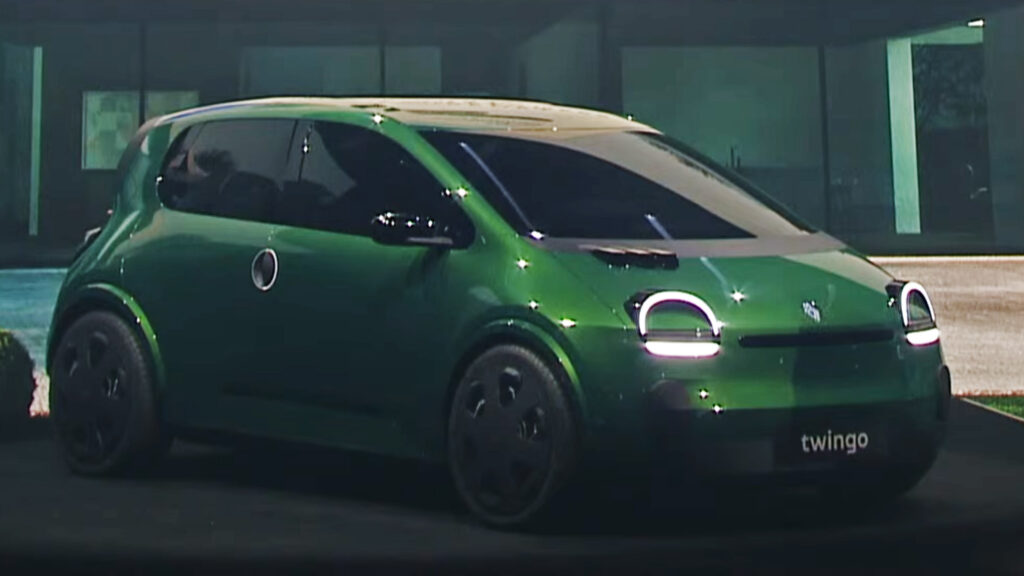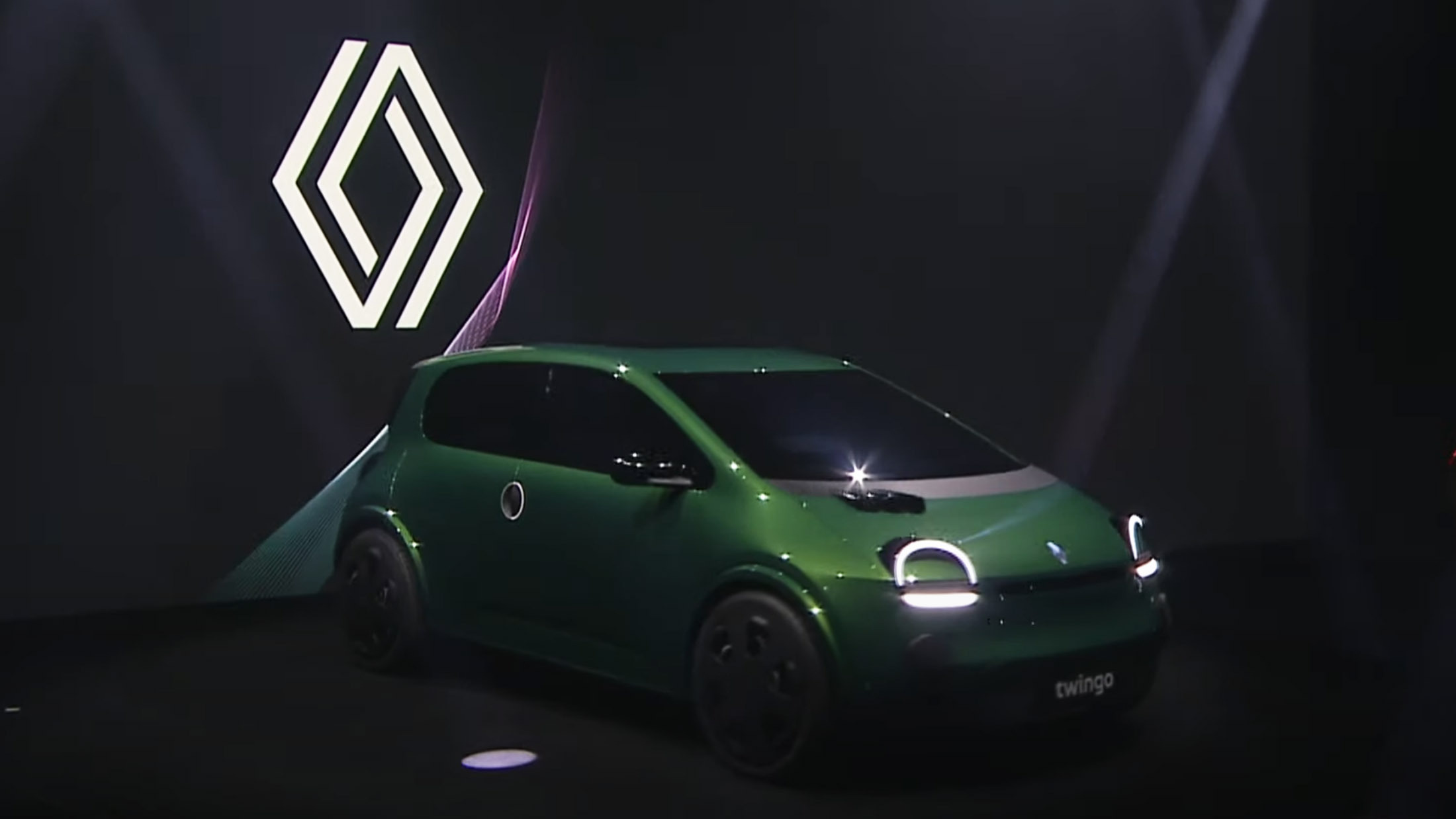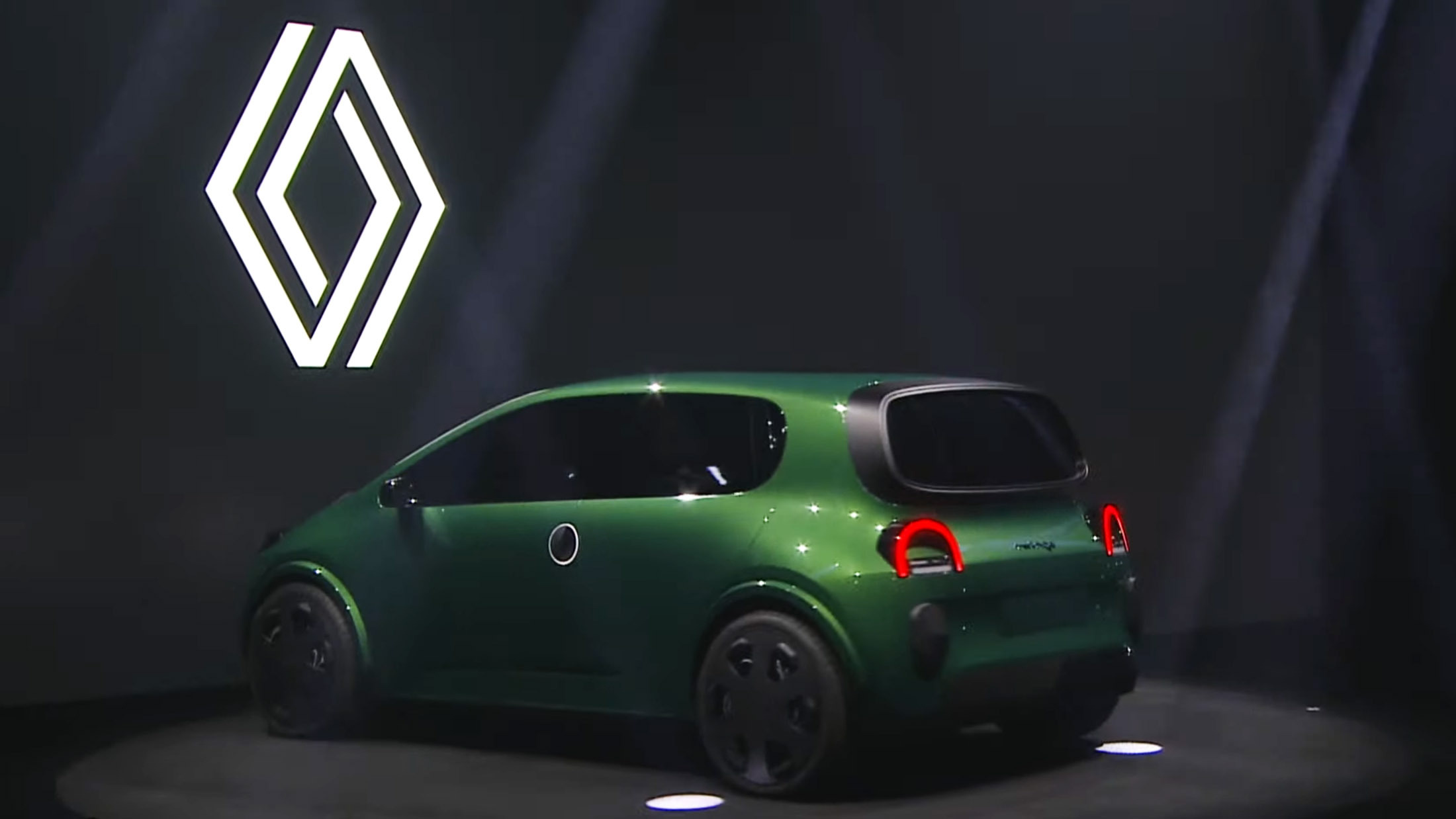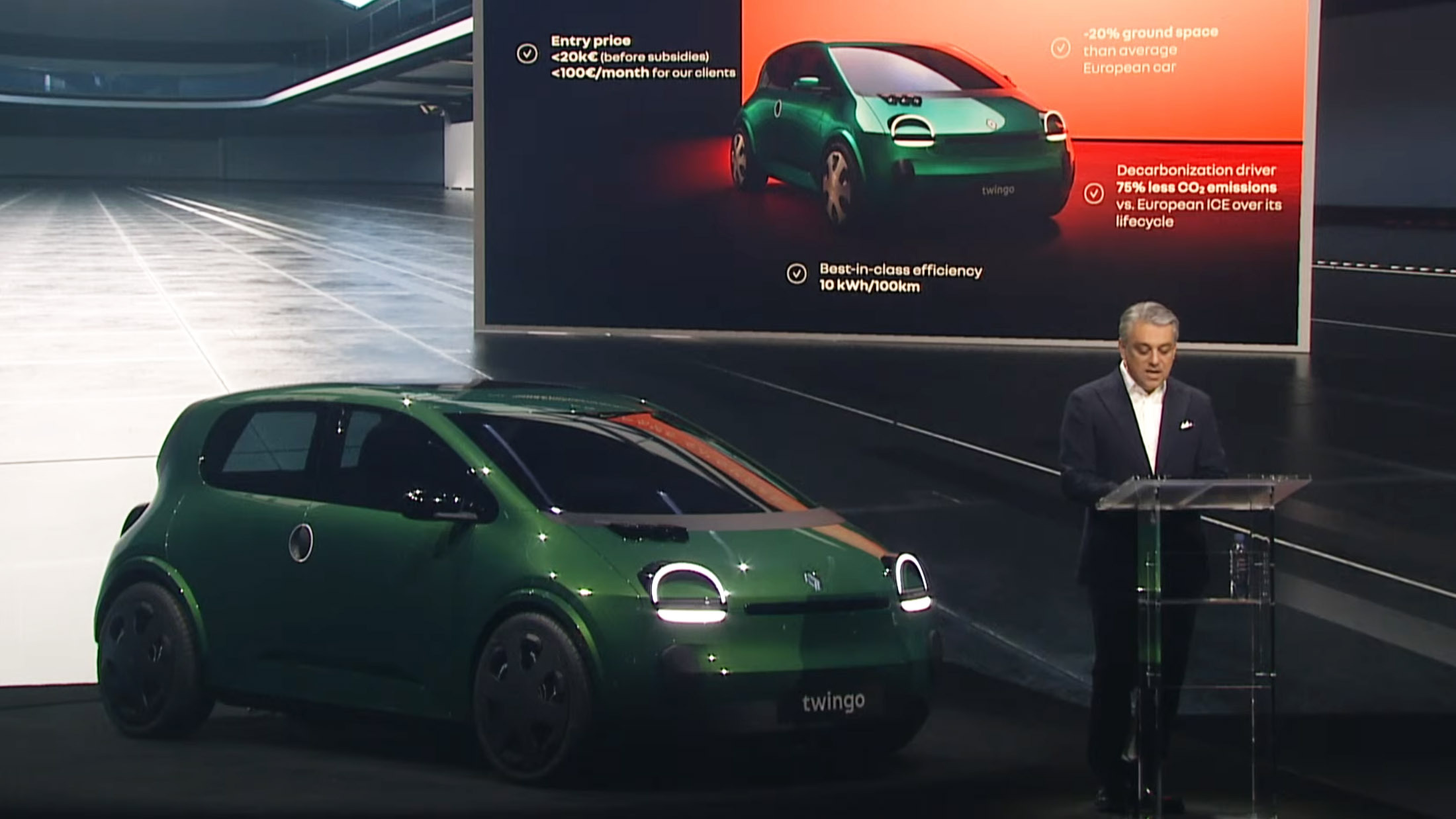While we’re counting down the days until the €25,000 Renault 5 electric supermini makes its grand entrance in 2024, the French carmaker presented its vision of an even smaller and more budget-friendly city car under the Twingo nameplate. They’ve given us a sneak peek of the fourth-generation Twingo in conceptual form, featuring delightful retro-inspired styling reminiscent of the 1992 original.
Engineered and manufactured in Europe, this new model aims to offer an enticing starting price below €20,000 before subsidies (or under €100 per month) when it hits the market in 2026, positioning itself as a cost-effective response to an increasing number of Chinese rivals.
Luca de Meo, Renault Group’s CEO, stated that the new Twingo aspires to become a “game-changer,” following in the footsteps of its predecessor from 30 years ago. This affordable model is expected to assist Renault in accomplishing its goal of “democratizing” EVs in Europe, thanks to its newly established Ampere unit, which is dedicated to EV and software development.
More: Renault To Launch 8 New Models For Markets Outside Europe By 2027
The styling of the new Renault Twingo is heavily inspired by the first generation from the ’90s. However, it departs from its predecessor’s three-door configuration, opting for a more practical five-door design. The similarities go beyond the semi-circular LED lighting units on both ends that resemble the smiling eyes of a cartoon. The windshield matches the incline of the short hood, creating the signature single-box proportions that are beneficial for packaging.
The handles for the front doors are seamlessly integrated within an illuminated circle, while the rear ones are discreetly concealed in the C-pillars. This clever design allows the new Twingo to embrace the practicality of a five-door body style while maintaining the visual essence of its three-door-only predecessor. The greenhouse and the extended rear windshield represent evolved interpretations of the original design, while the notably larger wheels bring the proportions firmly into the 21st century.
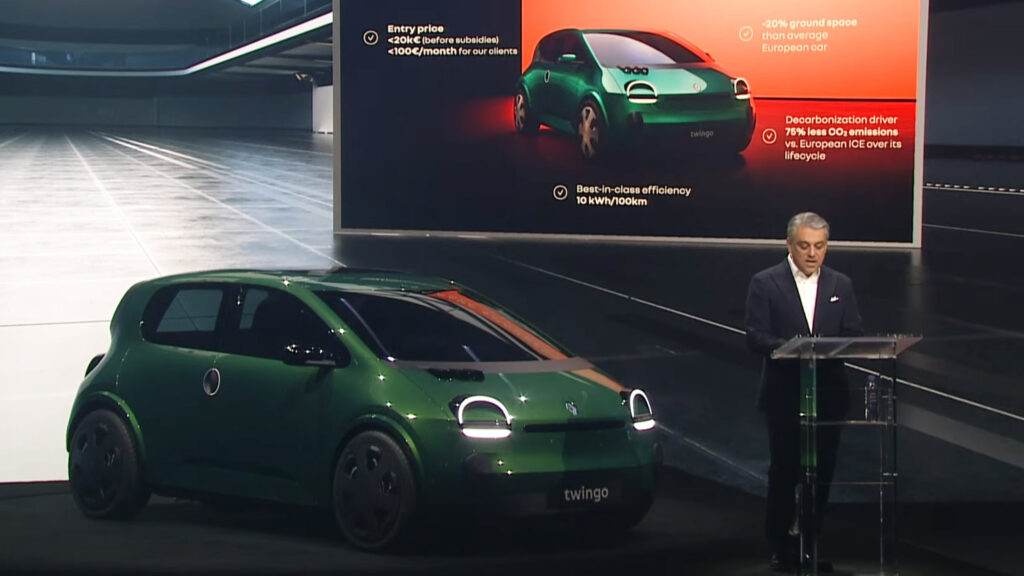
Renault has not disclosed detailed specifications for the urban EV, but they have highlighted its “best-in-class efficiency” of 10 kWh/100km, zero-tailpipe CO2 emissions, and a 75% reduction in CO2 emissions over its entire lifecycle compared to the average European ICE vehicle sold in 2023. Additionally, thanks to its compact footprint, the Twingo occupies 20% less ground space than the typical European automobile.
Renault confirmed that all of the upcoming models from its Ampere unit will be produced in Europe, something that also applies to the Twingo. The city car will most likely ride on the EV-native AmpR Small architecture. This is the new name of the CMF-BEV platform that will also underpin the slightly larger Renault 5 supermini, among many other EVs. Speaking about the Twingo, Luca de Meo revealed that they are in ongoing discussions with OEM partners to share development costs, without going into specifics.
When it arrives in 2026, the Renault Twingo will compete in Europe’s A-Segment, against the upcoming VW ID.1, Citroen e-C3, and Fiat Panda, as well as the rumored entry-level EVs from Hyundai, Kia, and Opel that will already be on sale by then.




